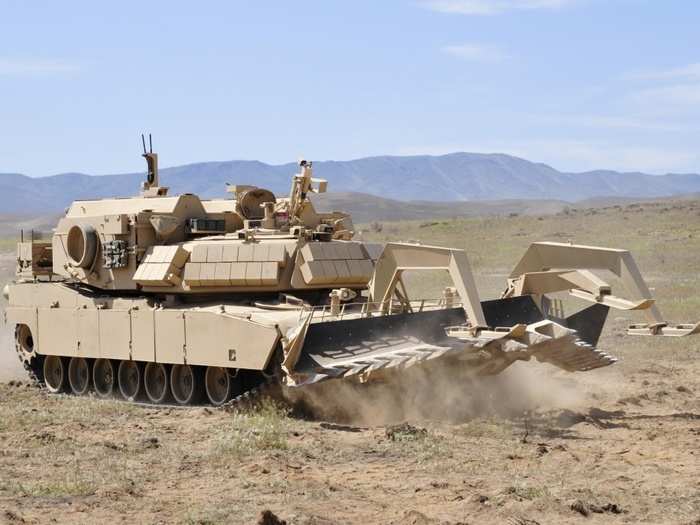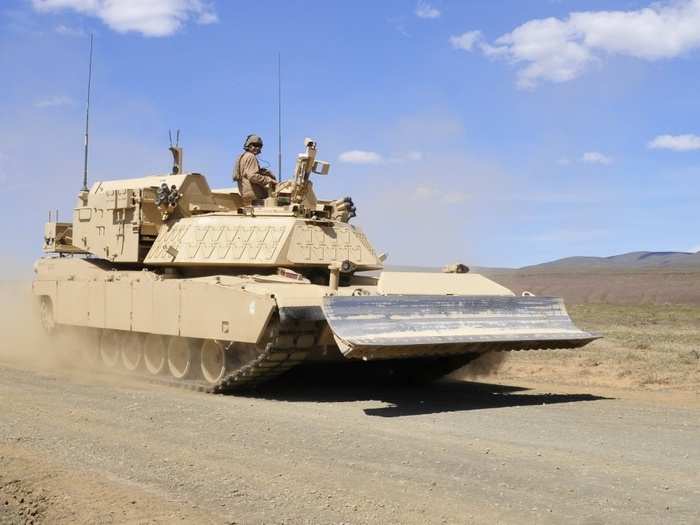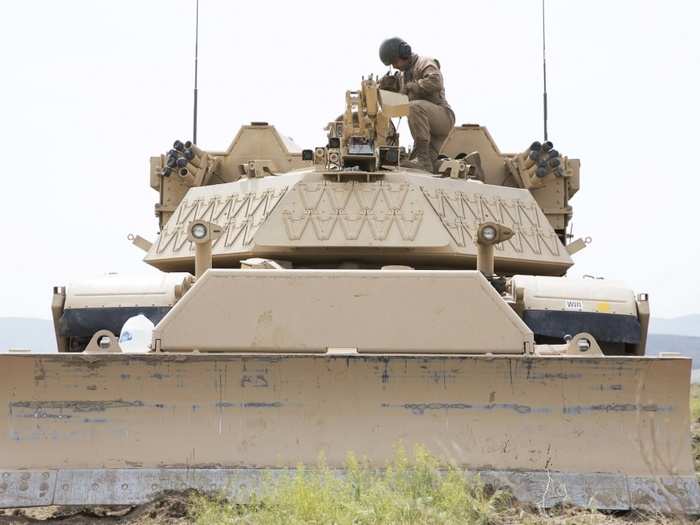The Army and the Marines tested a robotic version of the ABV for the first time out at Yakima Training Center a few weeks ago in a first step toward pulling troops out of the breach.
"This is something we cried from the mountain tops for. Somebody listened," Lonni Johnston, program manager for Army Future Command's Robotic Complex Breach Concept (RCBC) and former assistant program manager for the ABV program, told Business Insider.
During the recent demonstration at Yakima, a prototype was put to the test. "This is the first time this has been used. We've never had a robotic version of this until now," Johnston explained.
The robotic ABVs in the recent test were supported by a robotic Polaris MRZR vehicle capable of creating smoke screens, as well as suppression fire units, which in a real situation could be either manned or unmanned.
"A breach is one of the most complex maneuvers during any type of military operation because there are so many components to it," Johnston explained.
The breach is one of the most dangerous places a soldier or Marine can find themselves.
"The breach is literally the worst place on Earth," Johnston, a retired Army officer, told BI. "It's the most dangerous place on the planet."
"Every gun, every cannon, everything that shoots a missile or a bullet is going to be aimed at that breach," he added. "When you are attacking an enemy force that is hellbent on keeping you out, they are going to do whatever they can to do that."
So, the Army and Marines are looking at robotic systems smash through the breach, which soldiers and manned vehicles can then flow through.
The services have a number of challenges to surmount for robotic ABVs to be effective against a tough adversary.
It's unclear when the robotic ABVs will be ready for deployment, but the Army is envisions fielding six per brigade, four with mine plows and two with combat dozer blades. That is how many the service believes it needs to clear two breach lanes.
Each vehicle would be operated by one person in either a stationary or mobile command and control center.
Challenges include electronic countermeasures, such as jamming technology that could be used by an enemy to incapacitate these vehicles. There are also concerns about what to do if it dies mid-breach, inadvertently becoming just the kind of obstacle it was meant to obliterate.
These are some of the things the services will have to explore as they push forward on this technology.



